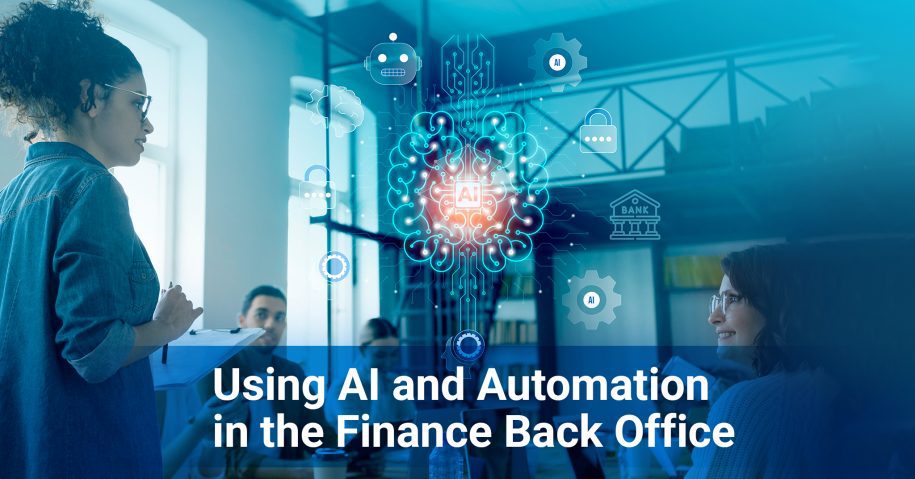With the advent of Artificial Intelligence (AI), Machine learning (ML), Natural Language Processing(NLP), and Robotic Process Automation (RPA), businesses can streamline workflows, cut costs, and foster sustainable growth amid market challenges. Despite advancements in enterprise resource planning (ERP) systems, a substantial portion of finance back-office operations lingers as manual efforts, wasting time and resources.
This blog aims to explore the tangible benefits and practical implications of integrating artificial intelligence (AI) and automation into finance back office operations, addressing the hurdles faced by these essential teams.
Pain Points for Back Office Finance Teams
The daily grind for back office finance teams is marked by challenges stemming from manual workflows and unstructured data The laborious task of manual data entry for Accounts Payable and Accounts Receivable (AP/AR) not only consumes time but is also a breeding ground for errors.
Here are some pain points that pose tangible risks to financial accuracy:
- Ensuring stringent compliance
- Going through intricate contract details
- Detecting subtle patterns indicative of fraud
- Managing cash flow amidst market dynamics
- Only a fraction of back-office processes are automated
- Nearly 50% of professionals are drained from manual work
Additionally, the back-office professionals might possess a conservative mindset and not be open to adapting to changes.
What Makes a Difference with Automation in the Back Office
One fact we must accept by now is that the integration of AI and automation isn’t about replacing human roles but rather amplifying their capabilities. Consider the labor-intensive chore of data entry; automation becomes a force multiplier.
- It expedites the process and drastically reduces errors.
- It increases the accuracy and productivity of financial teams.
- It allows them to automate, analyze, audit, and collaborate with AI, ML, and NLP.
In short, finance back-office automation enables professionals to focus on high-value, strategic activities.
What Tasks can be Automated?
Having timely and accurate information doesn’t make a stark difference unless it’s used strategically to drive intelligent decision-making and forecasting. Here’s a list of back-office functions that can be automated to cut manual errors due to repetitive processes:
Automated Data Entry & Processing
Automation tools excel at expediting the traditionally tedious and error-prone task of data entry. By automating this fundamental process, organizations fortify their foundations with increased accuracy and operational efficiency in managing expansive financial datasets.
Cash Flow Management
AI-driven algorithms are adept at analyzing historical data and market trends. This empowers organizations with proactive insights into cash flow patterns, mitigating the risks of financial bottlenecks and facilitating more informed decision-making.
Fraud Detection
Automation, coupled with machine learning algorithms, offers a robust solution for real-time fraud detection. Swiftly analyzing patterns, these tools act as vigilant gatekeepers, flagging suspicious transactions and significantly reducing the risk of financial fraud, thereby safeguarding financial assets.
Audit & Compliance
Automation proves indispensable in navigating the intricate process of audit and compliance requirements. Through precise programming, systems ensure unwavering adherence to regulations, reducing the risk of non-compliance and associated penalties. This meticulous approach streamlines the audit process and reinforces organizational commitment to regulatory integrity.
Contract Analysis
Manual contract analysis is time-intensive and prone to human error. Automation tools efficiently analyze contracts, highlighting potential risks. It ensures meticulous adherence to terms and conditions, thereby enhancing overall contract management.
Automated Account Payables & Receivables
Automation streamlines the complexities of handling invoices, tracking payments, and managing receivables. This not only expedites workflows but also minimizes errors, ensuring a seamless and error-free financial operation. Organizations gain a competitive edge by optimizing resource allocation and reducing operational friction.
Intelligent Document Processing
The task of sorting through an avalanche of documents becomes a breeze with intelligent document processing. Automation tools adeptly classify, extract, and organize information from documents, streamlining workflows and markedly reducing the time spent on manual document handling.
Benefits of Back Office Automation
The practical benefits of integrating AI and automation into finance back-office operations manifest across various dimensions, providing organizations with a robust foundation for growth.
Enhanced Efficiency
The automation of routine tasks precipitates a significant boost in efficiency. Human resources, unburdened by mundane activities, can redirect their focus toward tasks requiring critical thinking, creativity, and strategic planning.
Reduced Error Rates
Manual processes inherently carry a risk of errors. Automation minimizes the risk of inaccuracies and ensures that financial data is
- Reliable and trustworthy
- Contributing to more accurate decision-making
Cost Savings
The reduction in manual labor hours translates to tangible cost savings. Automation mitigates the need for extensive human intervention in repetitive tasks, leading to lower labor costs and a substantial decrease in expenses associated with error correction.
Improved Decision-Making
The speed and accuracy of automated processes contribute significantly to improved decision-making. Finance professionals gain access to real-time insights and analytics, empowering them to make informed, strategic decisions that resonate with the organization’s overarching goals.
Vantage Point
The integration of AI and automation into finance back-office functions is a practical imperative. The finance back office, usually sidelined in automation efforts, holds untapped potential with AI-powered automation. Beyond simplifying tasks like AP/AR, this technology fortifies business resilience. Tackling repetitive, large-volume, and time-sensitive processes, AI-powered automation allows finance teams to reclaim the most productive hours of an employee every day. Organizations gain efficiency and leverage the benefits of a sophisticated digital automation platform, ushering in a new era of streamlined financial operations.
A creative writer at heart and a strategic writer by profession. Mythri specializes in content writing, copywriting, and strategy for SaaS and AI. With 3 years of writing experience and ranking blogs on SERPs, she can transform complex concepts into reader-friendly bits. When she’s not typing away for the next hotshot brand, you’ll find her reading fiction novels or sweating it out at the gym.


Leave a Reply